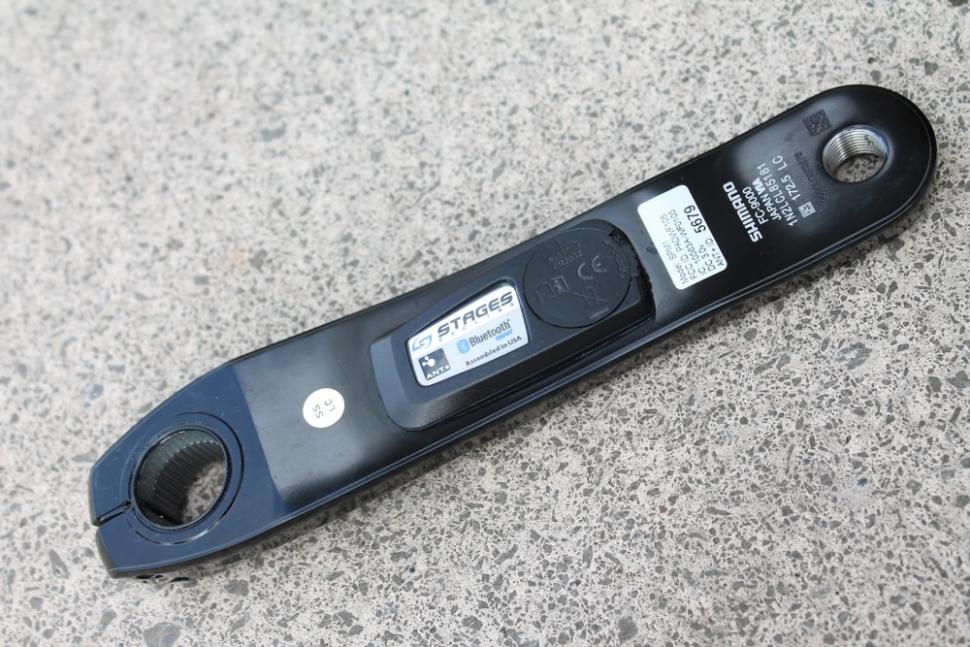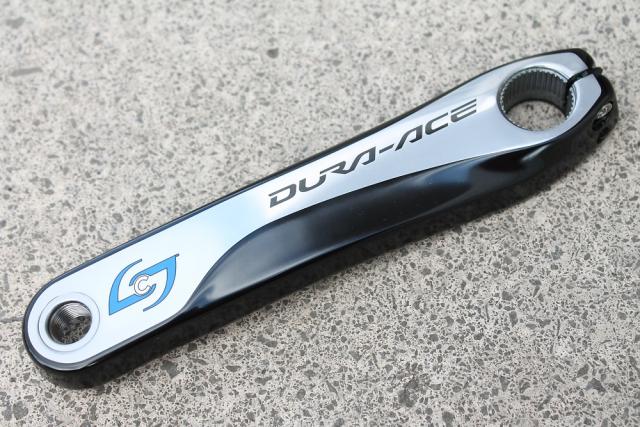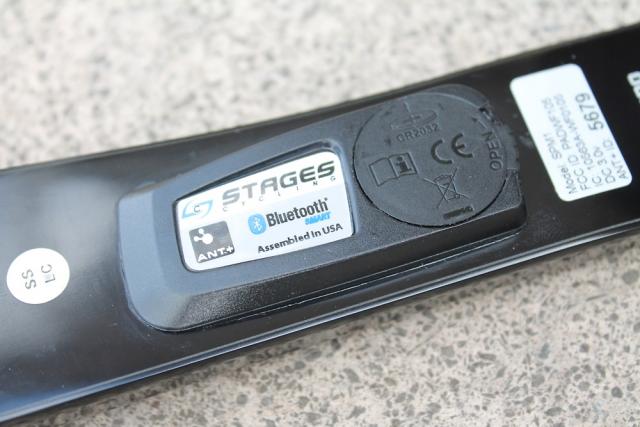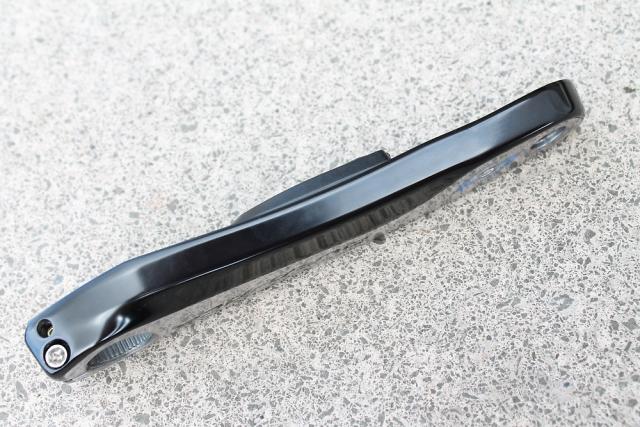- News
- Reviews
- Bikes
- Accessories
- Accessories - misc
- Computer mounts
- Bags
- Bar ends
- Bike bags & cases
- Bottle cages
- Bottles
- Cameras
- Car racks
- Child seats
- Computers
- Glasses
- GPS units
- Helmets
- Lights - front
- Lights - rear
- Lights - sets
- Locks
- Mirrors
- Mudguards
- Racks
- Pumps & CO2 inflators
- Puncture kits
- Reflectives
- Smart watches
- Stands and racks
- Trailers
- Clothing
- Components
- Bar tape & grips
- Bottom brackets
- Brake & gear cables
- Brake & STI levers
- Brake pads & spares
- Brakes
- Cassettes & freewheels
- Chains
- Chainsets & chainrings
- Derailleurs - front
- Derailleurs - rear
- Forks
- Gear levers & shifters
- Groupsets
- Handlebars & extensions
- Headsets
- Hubs
- Inner tubes
- Pedals
- Quick releases & skewers
- Saddles
- Seatposts
- Stems
- Wheels
- Tyres
- Health, fitness and nutrition
- Tools and workshop
- Miscellaneous
- Cross country mountain bikes
- Tubeless valves
- Buyers Guides
- Features
- Forum
- Recommends
- Podcast
TECH NEWS
 Stages Cycling power meter sensor side
Stages Cycling power meter sensor side Just in: Stages Cycling power meter
We met up with the guys from Stages Cycling earlier in the week and picked up one of their power meters, newly arrived in the UK, for testing. This should be interesting.
The powermeter market has really sparked into life lately after ages of just small changes. SRM and CycleOps Powertap have been out there for years, but now Garmin have launched their pedal-based Vector system, Rotor have been in the market for the past season, SRAM have their Quarq design, and several other designs have become available recently. US brand Stages is the new kid on the block. They were taking pre-orders for three months until the start of this year and have been shipping since January. Now they are being distributed in the UK through Saddleback.
The Stages system is a really interesting one for a couple of reasons. First, it’s crank based. All the information comes from the left (non-driveside) crank. That means it’s very easy to fit and to transfer between bikes. Say you wanted to train on one bike and race on another – you just spend a couple of minutes swapping the crank over.
Second, a Stages system costs from £599 to £799 (depending on the crank you go for). Now, before someone points it out, you’re not going to find that kind of cash in loose change down the back of the sofa, but it does put power measurement within reach of a whole lot more people than before.

We’ll give you a bonus third reason why Stages might interest you: it sends out the information via both ANT+ and Bluetooth Smart meaning you can get readouts on a vast number of different devices, so you might already have something that’s compatible.
We’ll do a deep and meaningful discussion of all the different power-measuring options available one of these days (we’d have done one already but that pesky Eurobike has got in the way and taken up all our time lately). Here, though, we’ll just tell you a bit about the Stages system…
Why might you be interested in measuring power in the first place? It used to be that power measurement was only for hardcore racers, largely because of the price, but it actually makes a lot of sense for anyone wanting to get the maximum level of fitness/training benefit from their time of the bike – and that’s most of us. Training by heart rate is good for this. Training by power and heart rate is better.
The Stages system is simple by power meter standards. It relies on a bending beam that Stages add in a pod attached to a groupset manufacturer’s crank – say a Dura-Ace non-driveside crank supplied by Shimano.
You push on the pedals, the crank deflects enough for the bending beam to pick up the movement, the data is converted into a power measurement, and the information is displayed on a readout. The Stages system automatically adjusts for changes in temperature (a temperature slope has been produced at the manufacturing stage) and you also get an accelerometer-based cadence measurement. That’s it in a nutshell.
The Stages system adds less than 20g to your bike and it runs off an everyday CR2032 coin cell battery. You’ll get about 200 hours of use per battery, according to Stages.

Downsides? Well, some people will point to the fact that Stages measure what’s going on using the non-driveside crank only. It simply doubles the figure to give your power, so it’s effectively assuming that your two legs are doing an equal amount of work.
Stages reckon that for 90%+ of the population, this works. They also say that their system is accurate to within +/-2% at 100 watts and a cadence of 90rpm.
Stages don’t give you a pedal stroke chart – a way of analysing how you’re applying the power throughout a pedal revolution – although they do say that this will be added at some stage, and you’ll be able to update existing Stages systems.
Another limiting factor is that Stages only works with alloy cranks. That’s fine if you use a Shimano groupset, but you’ll have to use a SRAM Rival crank if you run a SRAM Red chainset, for example.

One final restricting factor is that a Stages system won’t work with every bike. You need a certain amount of clearance between the crankarm and the frame (go to the Stages website for details on that). Stages say that their system will fit 90% of road bikes although it's not compatible with some that have Shimano direct-mount brakes fitted, like those found on the new Felt AR. You have to opt for TRP brakes or Felt's own design to allow for enough clearance in that scenario.
Despite those potential barriers – which might not be barriers at all to you – the fact that the Stages power meter is cheaper than other options and so easily transferable seems to make it an appealing option.
We shall soon see how it performs out on the road. We’ll be looking at it alongside the Garmin Vector pedals (review coming soon) and a PowerTap system to get a full picture.
In the meantime, go to www.stagescycling.com for more information, or visit the UK distributor www.saddleback.co.uk.
Mat has been in cycling media since 1996, on titles including BikeRadar, Total Bike, Total Mountain Bike, What Mountain Bike and Mountain Biking UK, and he has been editor of 220 Triathlon and Cycling Plus. Mat has been road.cc technical editor for over a decade, testing bikes, fettling the latest kit, and trying out the most up-to-the-minute clothing. He has won his category in Ironman UK 70.3 and finished on the podium in both marathons he has run. Mat is a Cambridge graduate who did a post-grad in magazine journalism, and he is a winner of the Cycling Media Award for Specialist Online Writer. Now over 50, he's riding road and gravel bikes most days for fun and fitness rather than training for competitions.
Latest Comments
- hawkinspeter 8 min 56 sec ago
You could get away with much less turning area required if you go for a Kakeya set...
- Gbjbanjs 21 min 22 sec ago
Insured yes, through BC, no.
- Gbjbanjs 28 min 19 sec ago
Any chance we could have bike reviews for people with normal disposable incomes? My ti bike cost £2k, brilliant, versatile.....
- chrisonabike 46 min 23 sec ago
- matthewn5 1 hour 27 min ago
I built a gravel bike last summer - a Ridley Kanzo Fast with Campag Ekar - and have used it through the winter with mudguards for club runs and the...
- David9694 5 hours 1 min ago
Another Conservative bemused at how but a Conservative policy is turning out
- Global Nomad 10 hours 31 min ago
would be good to see you test the Newmen wheels the weight/price ratio is extremely good and suggests that europeans can match the chinese in this...
- mdavidford 12 hours 50 min ago
I don't think you have. I think their point was:...
- jamesha100 22 hours 46 min ago
Should be a lifetime driving ban. Who could seriously argue against the justice of that in this case?
Add new comment
15 comments
On thing i learnt speaking to the guys from stages is how they measure accuracy, ie +/- 2% at 100 watts, so that a range of 4 watts 98 to 102 watts.
I always assumed this was a percentage at any given power, ie. at 1000 watts the range would be 40 watts.
Not so, the 4 watt range stays the same all the way through the power curve so at 1000 watts it will still be within 4 watts so it actually gets more accurate the more power you put down.
ps... looking at the new Felt AR it is compatible with the frame, its the brakes on some models that stick out a bit too far that cause the issue. The shimano brakes are the issue but the TRP used on some fixes it, fortunatly TRP will be releasing this brake after market soon.
Who will be the first to install all three systems - PowerTap, Stages and Vector - on one bike for a handy way of testing the readings from the different products?
That's exactly what we are doing.
Solid cranks / hollow cranks make no difference, the unit is calibrated to work with what it's attached to and will give the same consistency regardless.
As for the one legged thing, the only 2-legged systems IIRC are Garmin pedals, Look pedals, Rotor cranks and the new Pioneer cranks. All are considerably more expensive; everything else (SRM etc.) does the same thing and uses an algorithm to double measured power.
It's between this and a PowerTap for me, and I think the Stages is edging it at the moment.
Nope - SRM, Quarq and Power2Max measure power applied to the spider, which gets direct input from both legs, so they measure power right through the pedal stroke. They don't double a single measurement.
This. Some of the spider based systems will pretend to show you left and right power, by splitting the overall spider measurement based on the position of the crank in its rotation - but that is still based on measuring the total power.
The stages looks like a good system for the money - if you're an uneven pedaller, or your uneven-ness gets worse at higher effort levels, then it might not be totally accurate, but it sounds like it's reasonably close for most people, and certainly close enough to base a training program on. It's also good because it's so easy to switch between bikes - easier (and less messy) than switching the full crankset (no need to handle the oily drive-side) and, for my money, beats a power tap because you can run it with a choice of wheels (best wheels and training wheels, for example).
To be pedantic, none of these systems 'measure' power; they measure strain and velocity and calculate power from these measurements, so there is always a fudge factor in there (they call it an algorithm).
For the overwhelming majority of people this will a great system because of one factor: price. Even if they were wildly inaccurate, as long as that inaccuracy was consistent, they will do the job, as you only want to know your personal figure and base your training at FTP etc. on that.
I've got an old wired SRM and I reckon I will probably switch to these for the ANT+ and BT wireless compatibility.
Head over to DC Rainmaker's site for the most comprehensive reviews / test of this (and almost all other) power meters on the market. Ray is seriously OCD when it comes to this stuff!
Confusing! - this replaces the LH crank, no? So is this entirely non-Campag compatible (because of the design has the axle and crank as one piece I think)? or just not compatible with Carbon cranks full stop - i don't see how material makes a difference..
You buy the relevant left-hand crank with the Stages sensor already installed, and they do not provide any Campag options.
The higher-end Campag chainsets are carbon and Stages say that carbon doesn't provide the consistent deflection curve that they need for their measuring system to work accurately.
Could Stages add their system to a mid-level/lower end Campag chainset with an alloy crank? I imagine it would be possible with the Power Torque system, for example, but I don't know for sure. Good question! I'll fire them a mail and ask.
Slowtwitch had some pretty comprehensive write-ups on it along with simultaneous comparisons with SRM and Powertap. I'm sold on it. I'm not going to worry about running an Apex arm with my Red crank.
Damn!
That said, if you happen to have access to a Wattbike (they're in the Velodrome and spin classes can be booked, although I haven't yet), then you would already know if you tended towards unequal leg power. Assuming you were roughly equal, this would make sense.
IIRC Apex crank is solid, so may not be a runner. Rival crank, however, is hollow, and stiffer as well. Presumably a less stiff crank would dilute the wattage that reaches the sensor.
Interesting, although I'm not sold on the one-legged thing. Looking forward to seeing the review.
I call your bluff. I bet you've ordered 3!
Interesting, though my Campy Chorus crank is not a runner